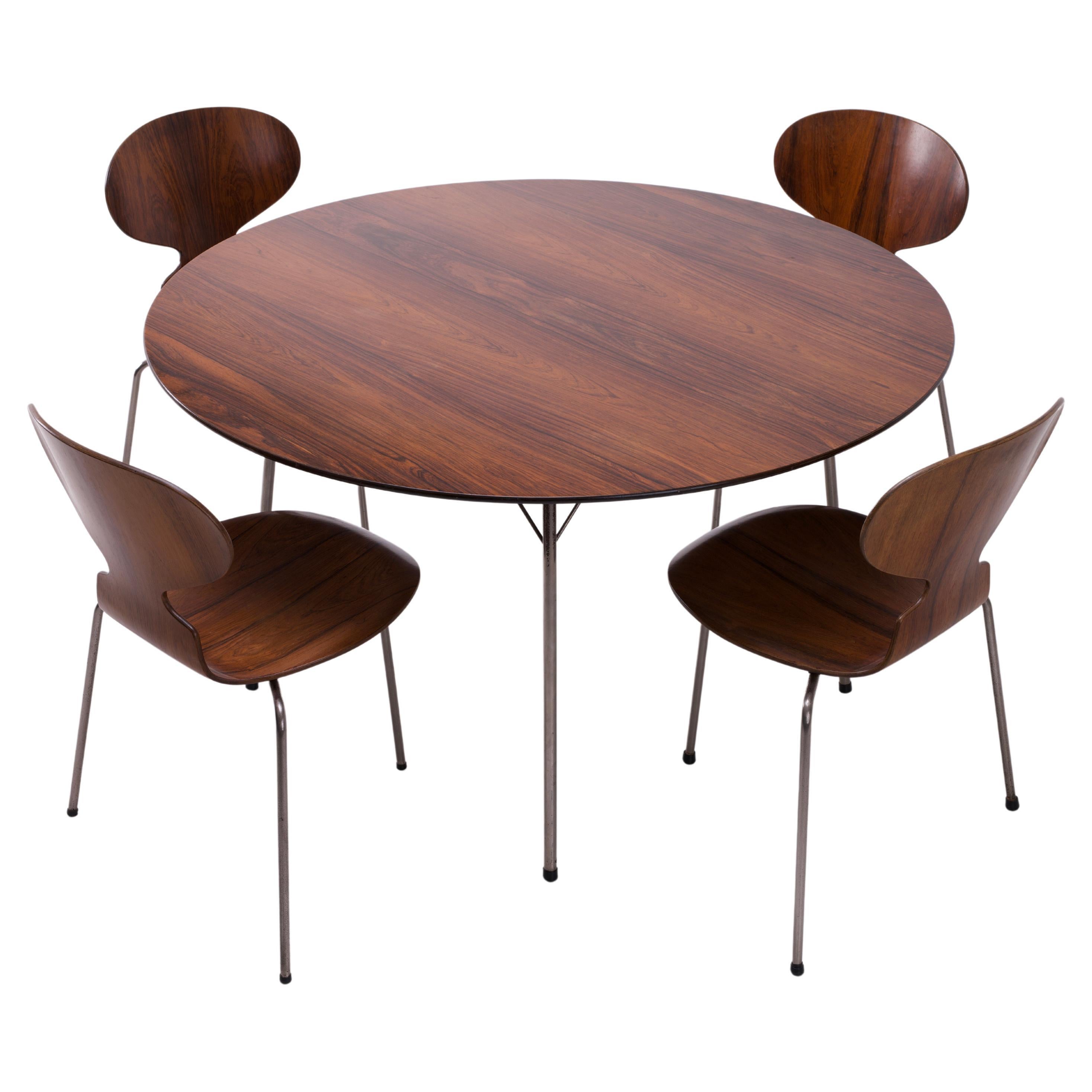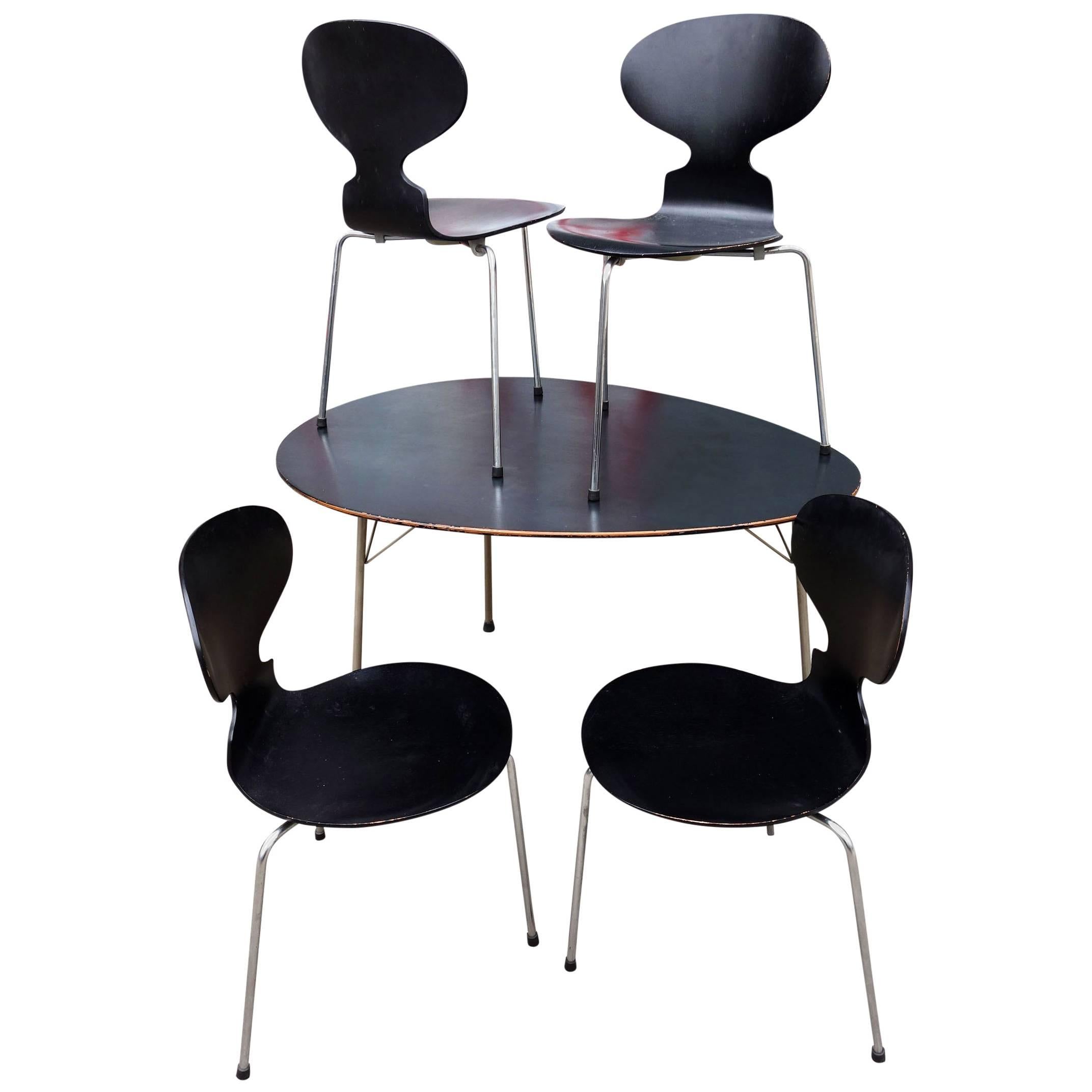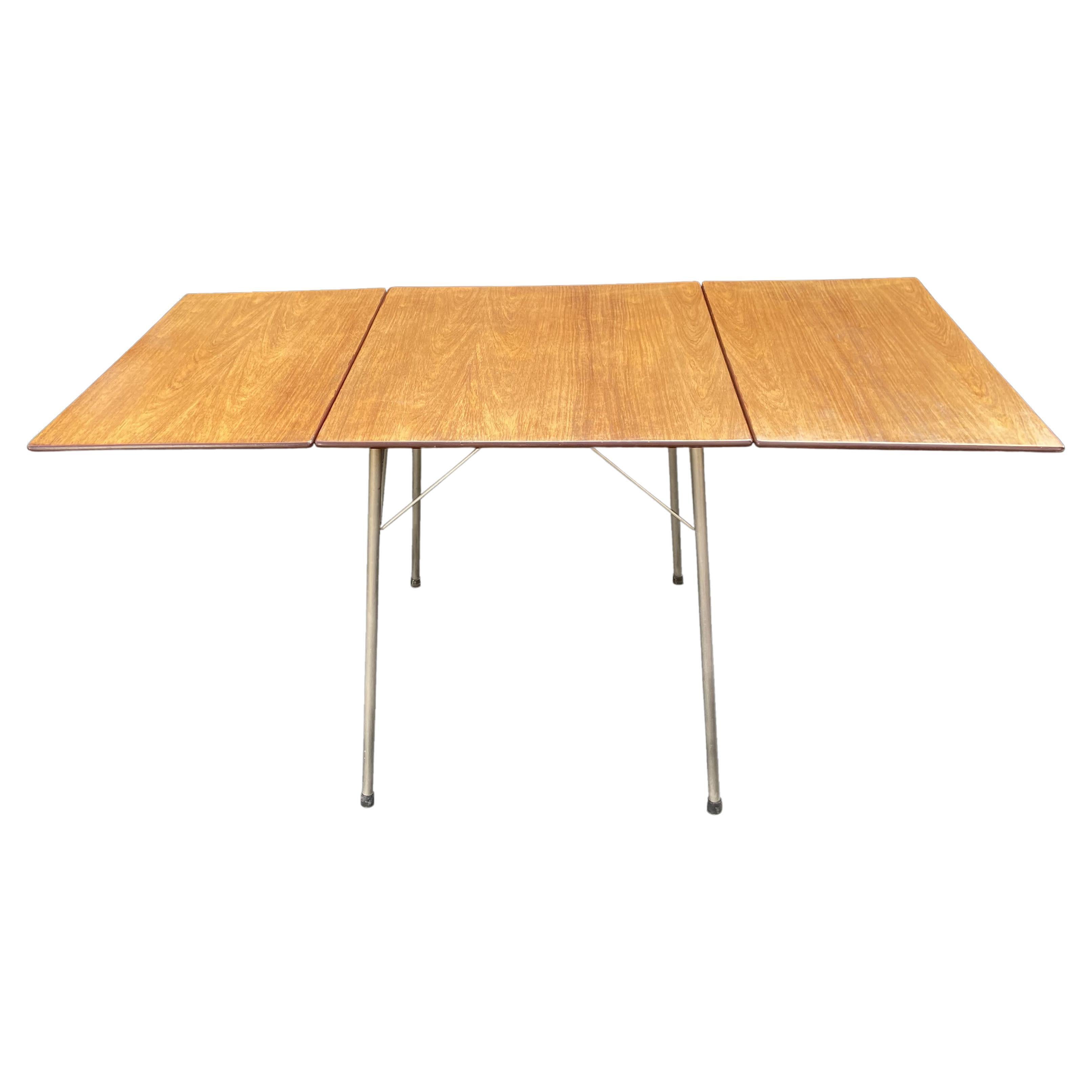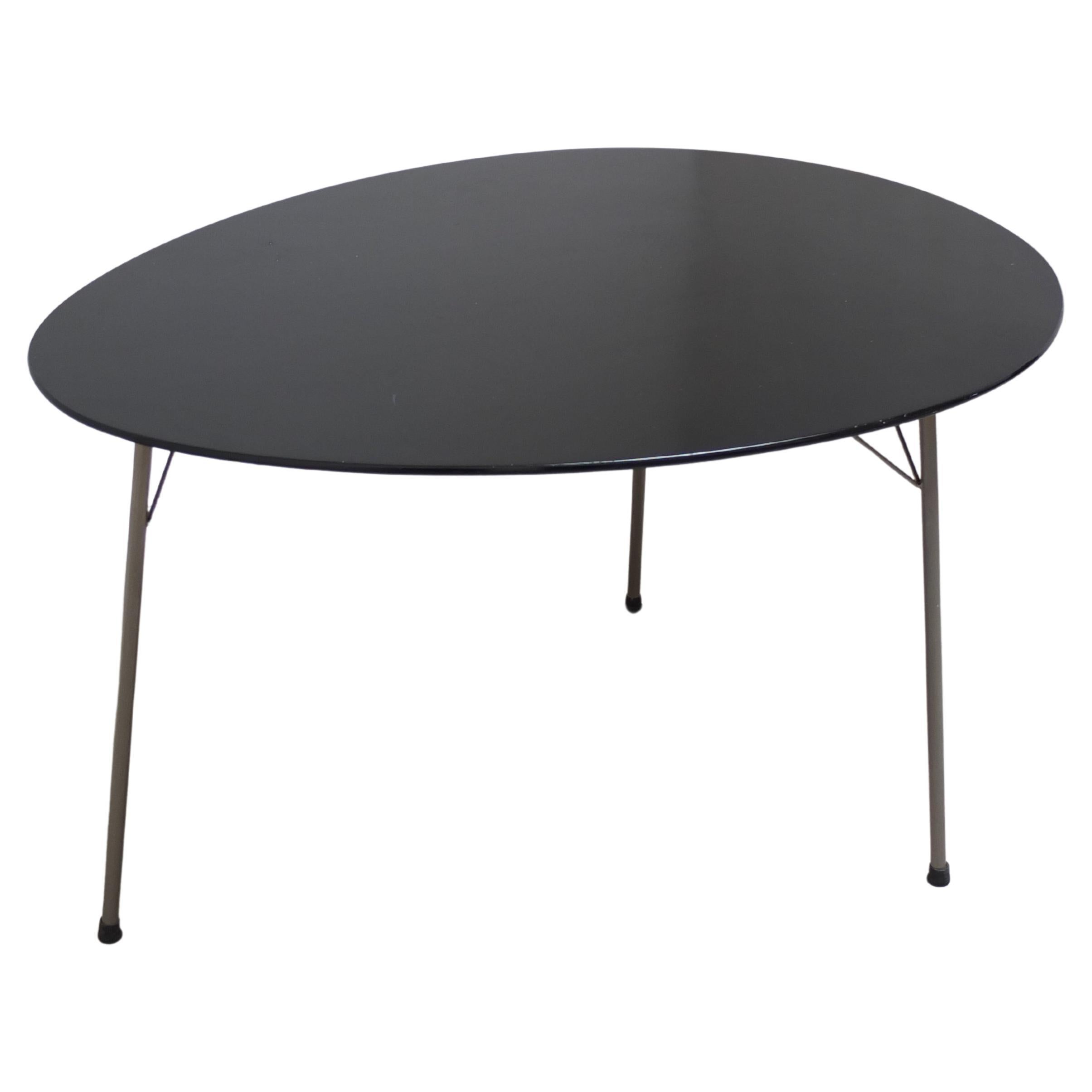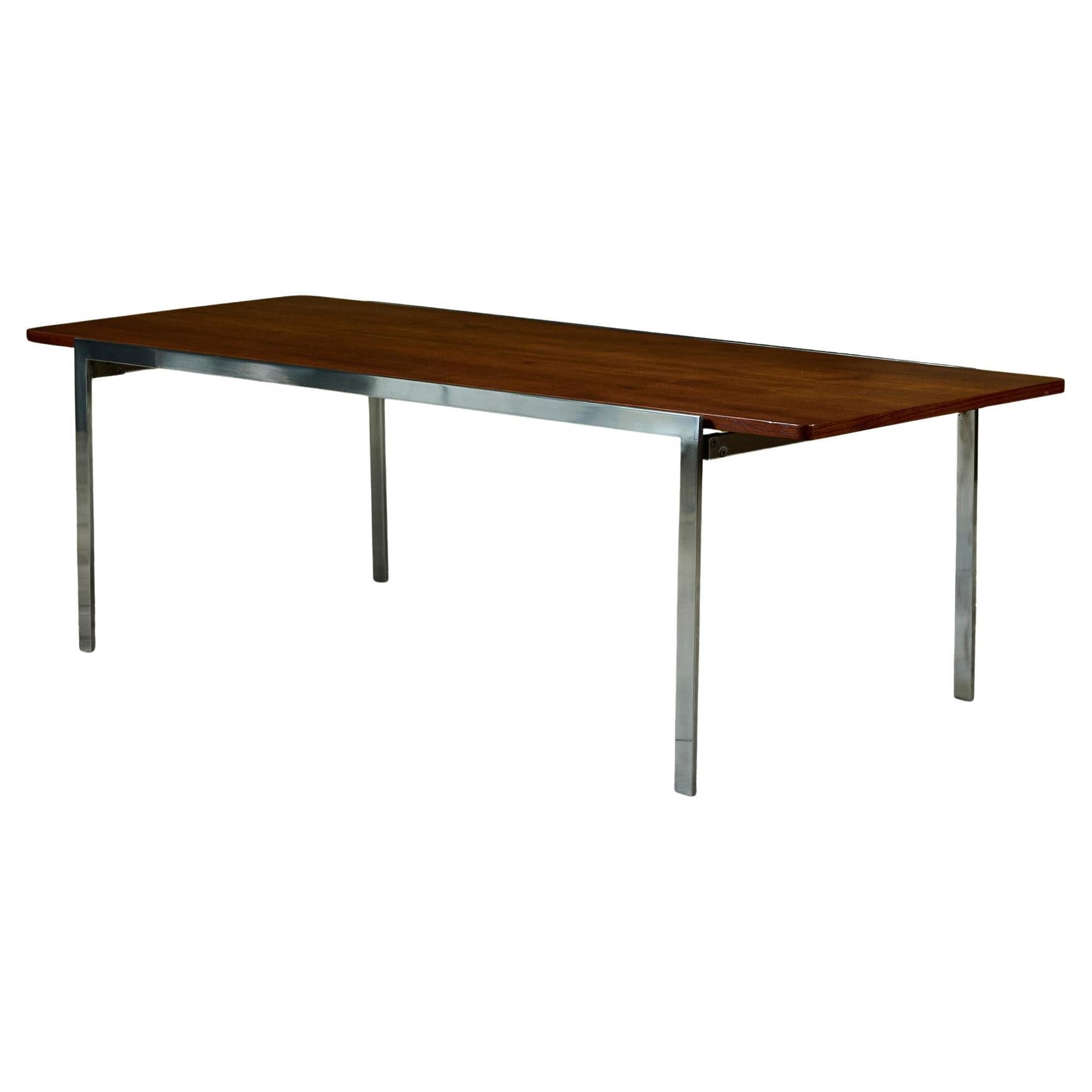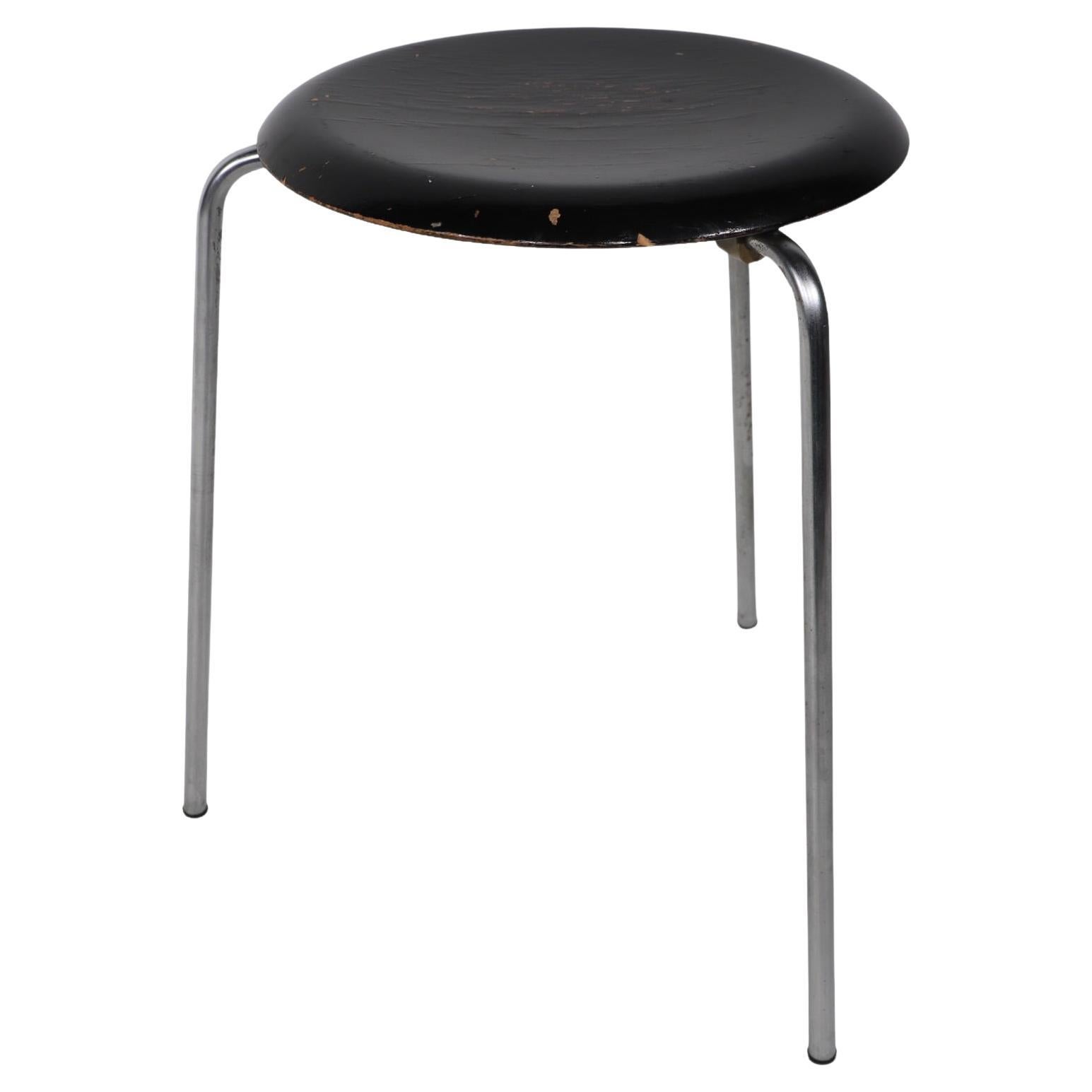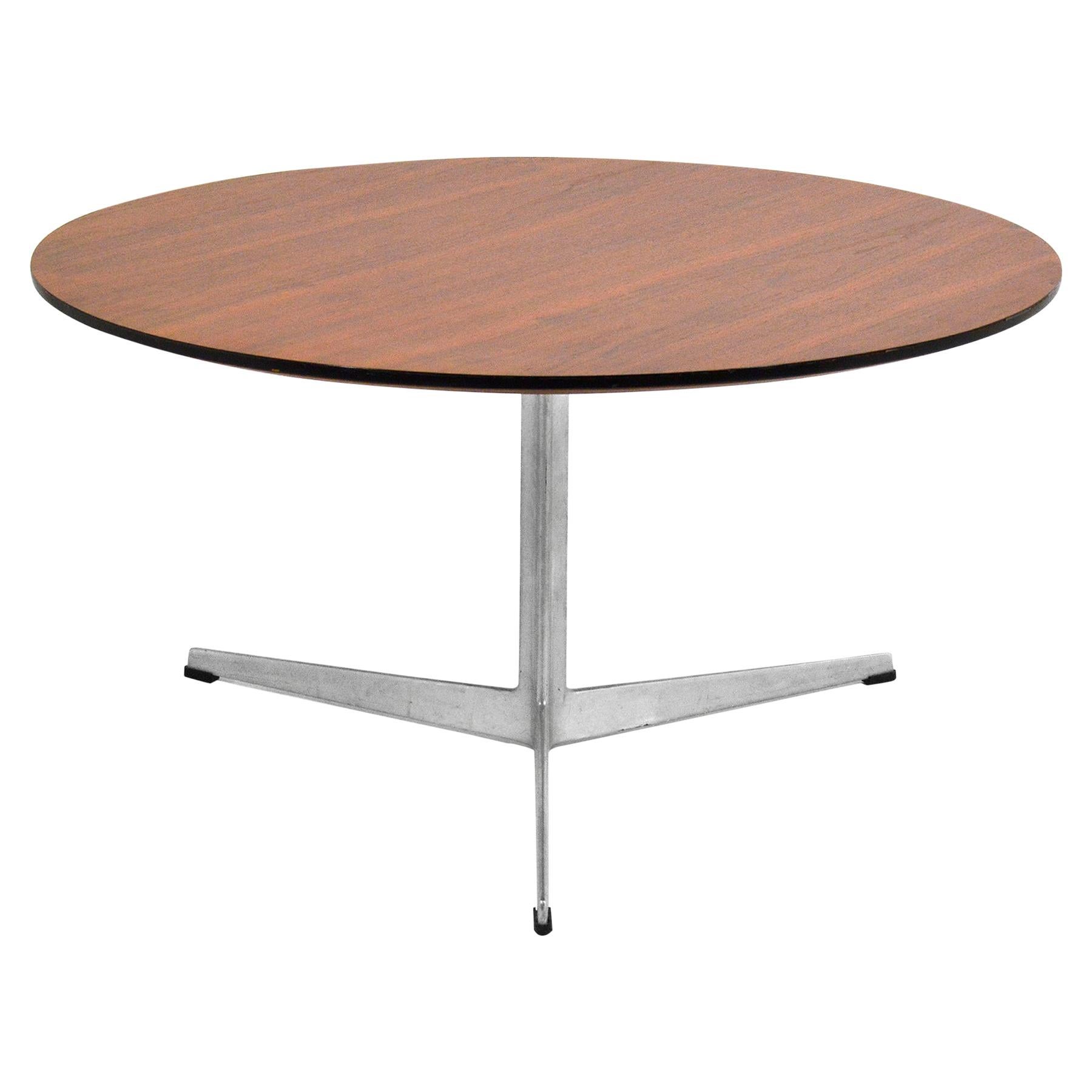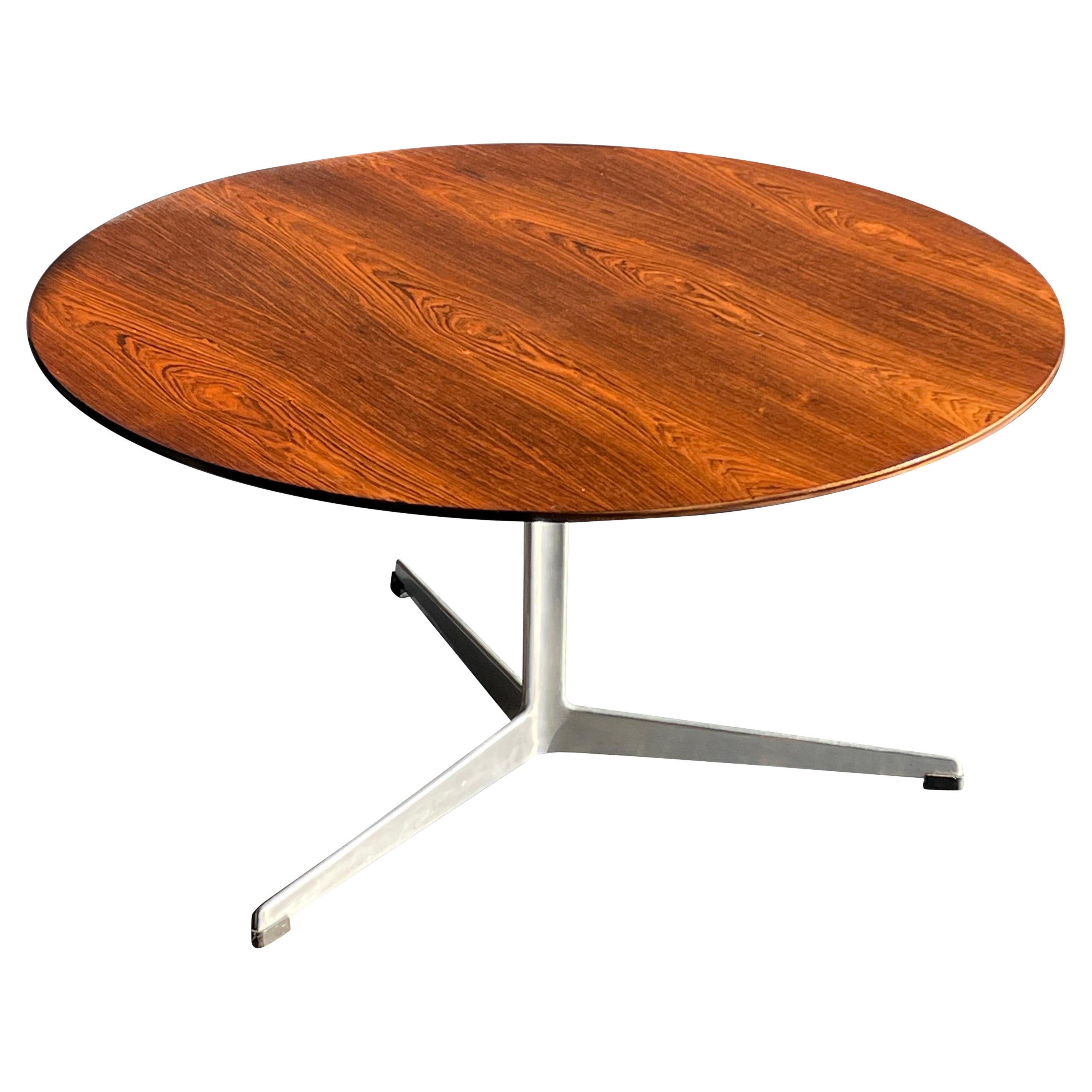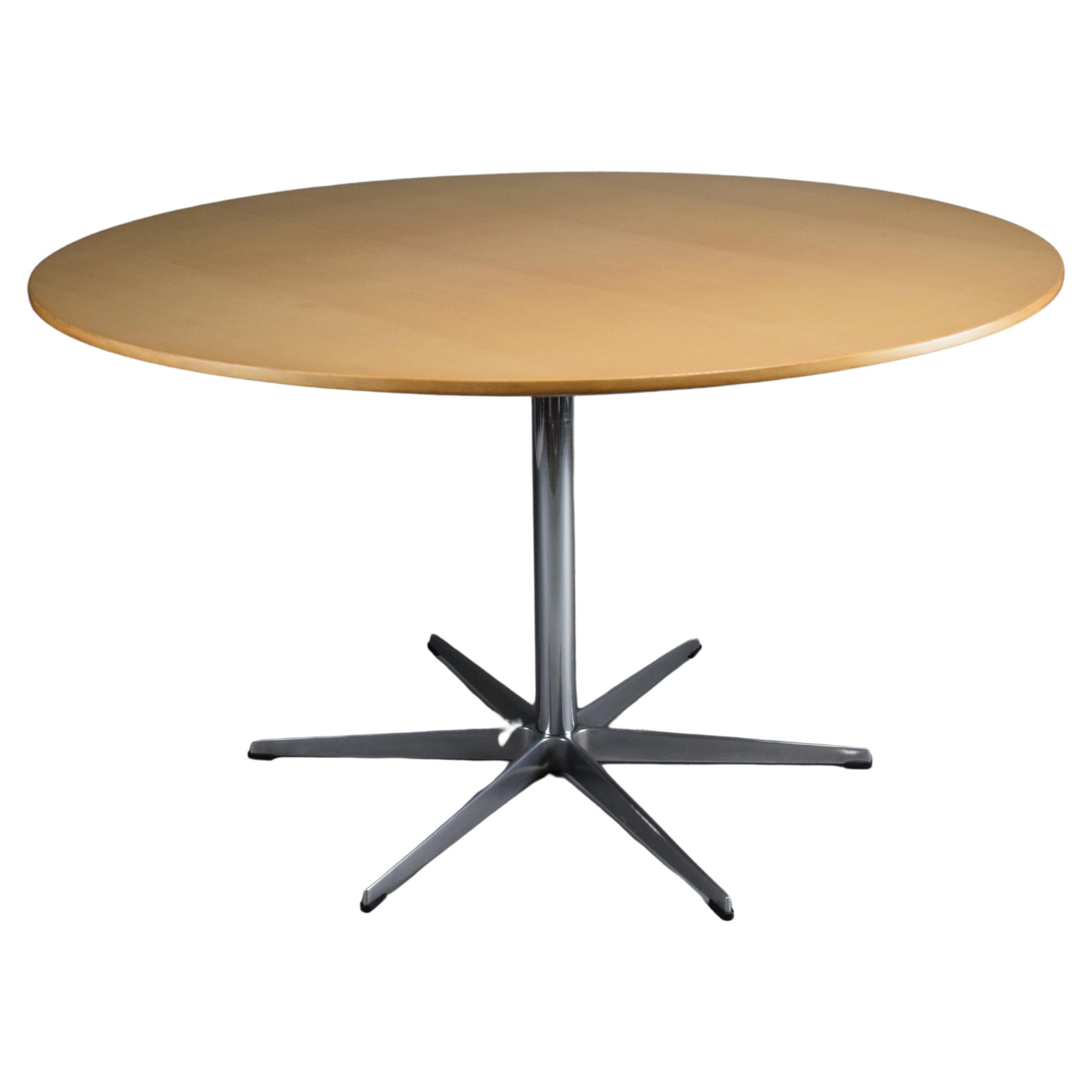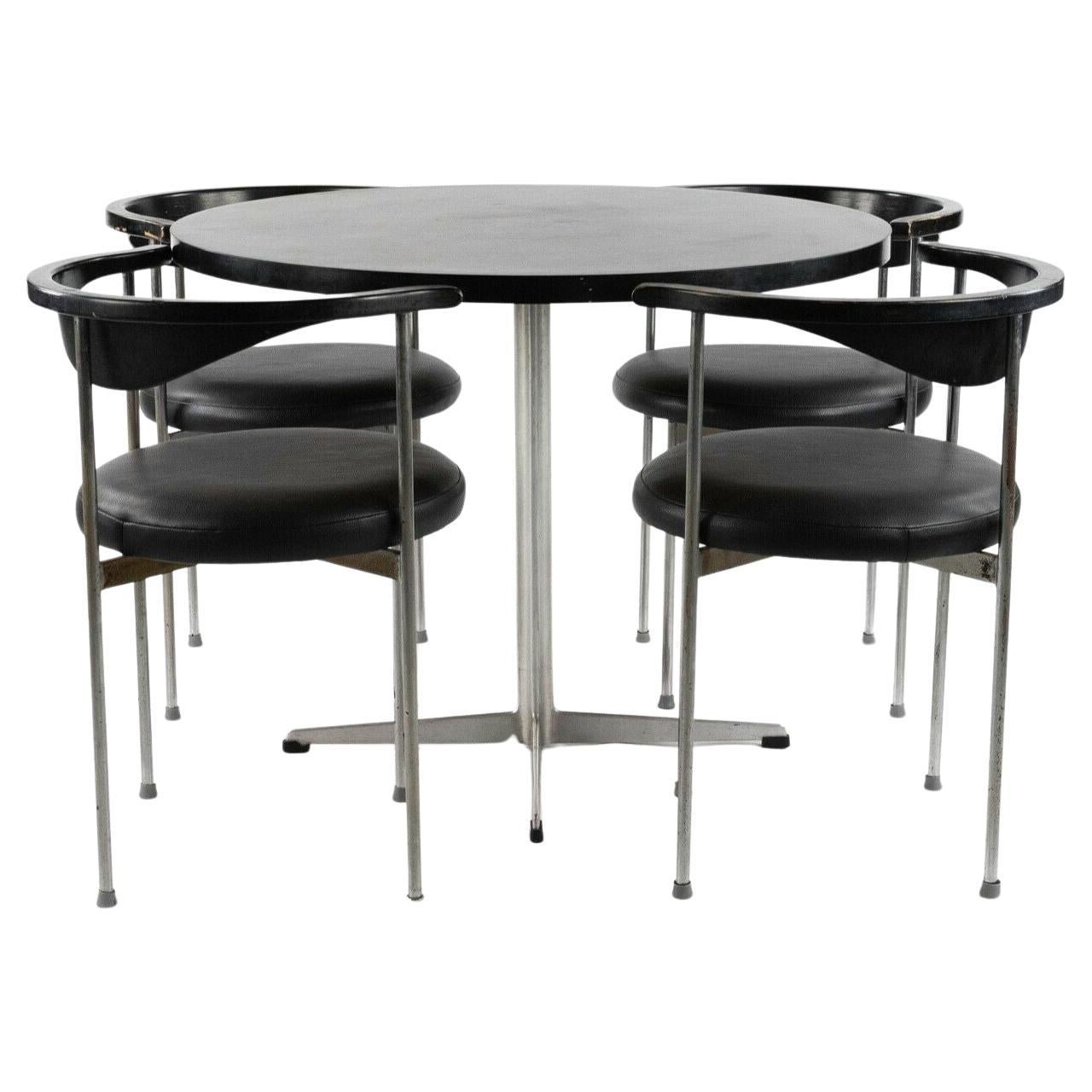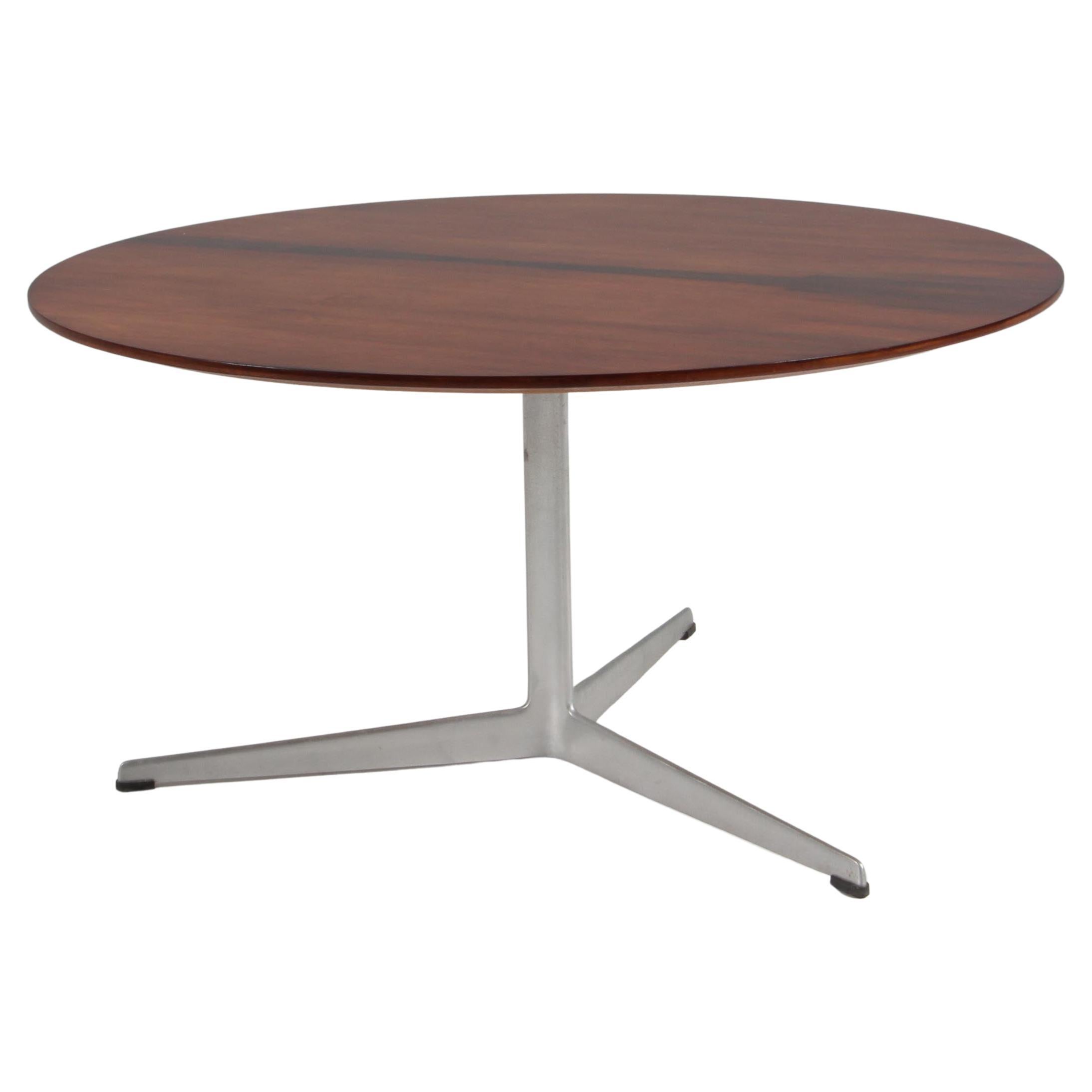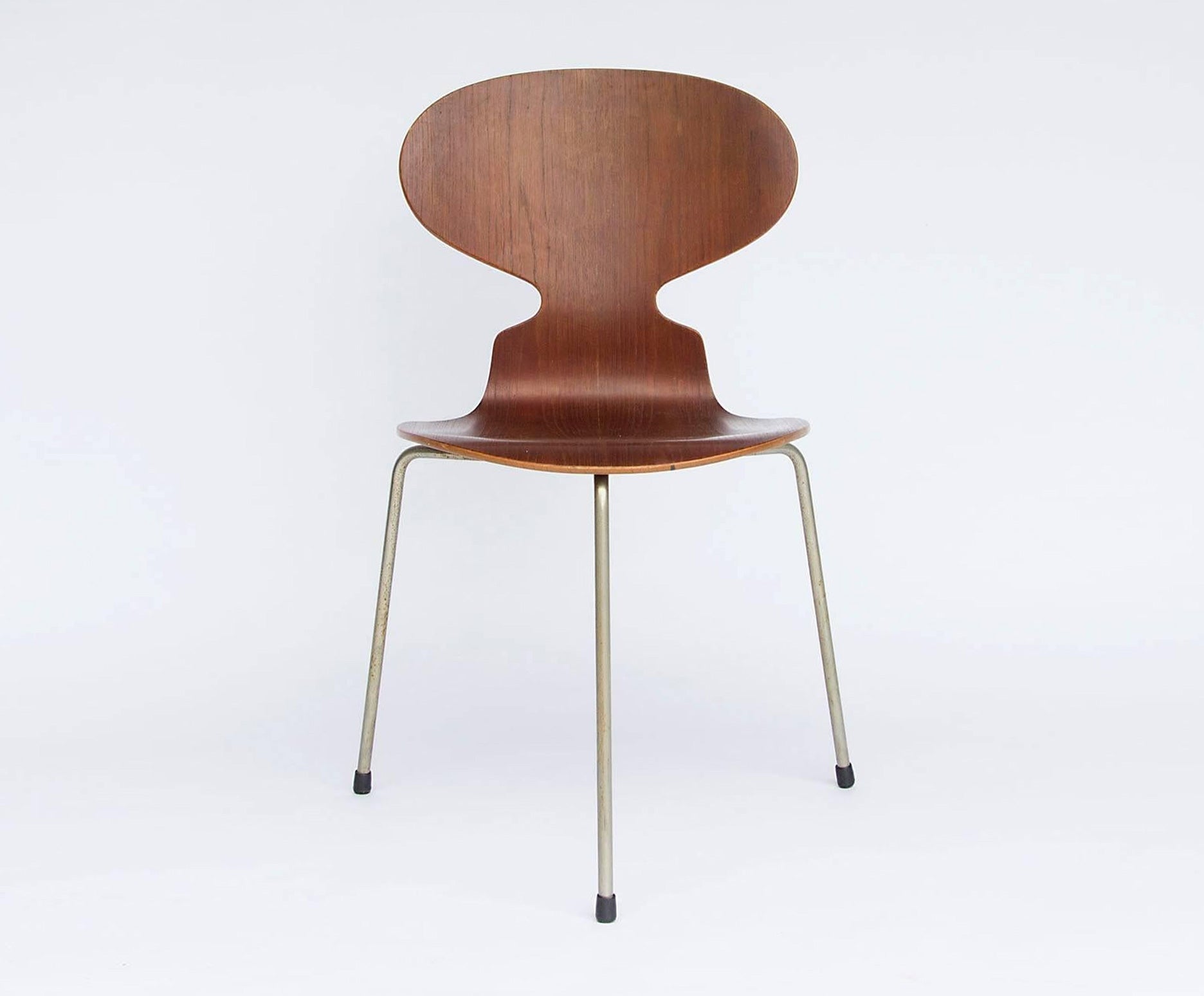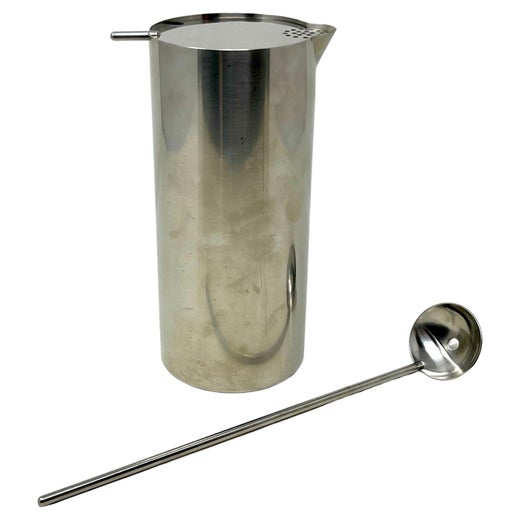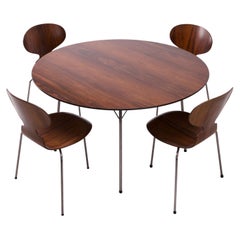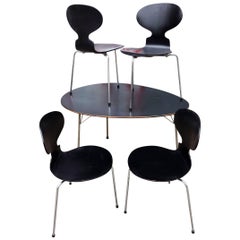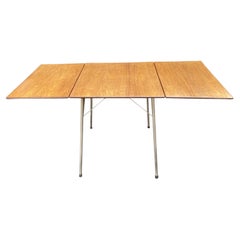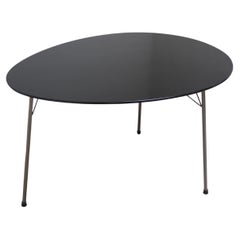
Arne Jacobsen Egg Table with Three Ant Chairs, Mfg. Fritz Hansen
View Similar Items
Arne Jacobsen Egg Table with Three Ant Chairs, Mfg. Fritz Hansen
About the Item
- Creator:Arne Jacobsen (Designer)
- Design:
- Dimensions:Height: 27 in (68.58 cm)Width: 45 in (114.3 cm)Depth: 33 in (83.82 cm)
- Style:Mid-Century Modern (Of the Period)
- Materials and Techniques:
- Place of Origin:
- Period:
- Date of Manufacture:1960s
- Condition:Refinished. Chairs have some de-lamination to the backs but are stable. Original rubber feet have some wear. Chairs H. 30 1/8 inches SH. 17 inches W. 16 ¼ inches D. 16 ¼ inches.
- Seller Location:New York, NY
- Reference Number:1stDibs: LU818013841061
Ant Chair
For almost anybody else in the early 1950s, designing a three-legged chair inspired by the shape of an ant with its head raised would be unthinkable. But Arne Jacobsen (1902–71), the modernist Danish designer and architect, was always ahead of his time. His Ant chair is part of his legacy of designing avant-garde, unusual and revolutionary chairs like the Egg, the Swan and the Drop.
As a child, Jacobsen covered the Victorian wallpaper in his bedroom with white paint, the beginning of a lifetime of pioneering new ideas in design and architecture. Soon after graduating from the School of Architecture at the Royal Danish Academy of Fine Arts, Jacobsen set up his own practice, through which he could further his ideal of “total design.” This meant that for the architecture projects he undertook — such as the revered SAS Royal Hotel in Copenhagen — he was involved in the design of everything down to the last detail: from the exterior structure to the door handles to the carpets.
Over time, this attention to detail evolved into a pursuit of perfect proportions, a quality that is most prominent in his organic furniture pieces like the Ant chair. Originally called the Model 3100 and designed for the cafeteria of Danish pharmaceutical company Novo Nordisk, the spare Ant chair (Myren in Danish) was inspired by plywood furniture crafted by American designers Charles and Ray Eames. Assisted by his then-apprentice Verner Panton, who would apply what he learned at Jacobsen’s practice to his own Cone chair and more, Jacobsen applied the Eameses’ groundbreaking ideas to the construction of his two-piece Ant chair — a seat and backrest made from a single piece of molded plywood supported by tubular metal legs. While the chair’s silhouette was unusual for the time, so too were its three legs. But Jacobsen insisted that in order for the chair to be functional and stackable — also uncommon in the 1950s — it couldn’t be any other way.
“I based my work on a need. What chairs are needed?” asked Jacobsen. In working toward his mission of creating functional furniture, Jacobsen inadvertently also created some of the most imaginative designs of the 20th century. The Ant chair is one of his most well-known designs.
Jacobsen’s longtime collaborator, Fritz Hansen, introduced the three-legged Ant chair as stipulated in 1952, despite complaints about its instability, and only introduced a four-legged version after Jacobsen’s death. It’s still manufactured today by Fritz Hansen and is in the collection of the Museum of Modern Art in New York and elsewhere.
Arne Jacobsen
The eye-catching work of the Danish architect and designer Arne Jacobsen often introduces new collectors to mid-20th century furniture. With their fluid lines and sculptural presence, Jacobsen’s signature pieces — the elegant Swan chair and the cozy-yet-cutting edge Egg chair, both first presented in 1958 — are iconic representations of both the striking aesthetic of the designers of the era and their concomitant attention to practicality and comfort. Jacobsen designed furniture that had both gravitas and groove.
Though Jacobsen is a paragon of Danish modernism, his approach to design was the least “Danish” of those who are counted as his peers. The designs of Hans Wegner, Finn Juhl, Børge Mogensen and others grew out of their studies as cabinetmakers. They prized skilled craftsmanship and their primary material was carved, turned and joined wood. Jacobsen was first and foremost an architect, and while he shared his colleagues’ devotion to quality of construction, he was far more open to other materials such as metal and fiberglass.
Many of Jacobsen’s best-known pieces had their origin in architectural commissions. His molded-plywood, three-legged Ant chair (1952) was first designed for the cafeteria of a pharmaceutical company headquarters. The tall-backed Oxford chair was made for the use of dons at St. Catherine’s College, Oxford, whose Jacobsen-designed campus opened in 1962 (while still under construction). The Swan, Egg and Drop chairs and the AJ desk lamp were all created as part of Jacobsen’s plan for the SAS Royal Copenhagen Hotel, which opened in 1960. (The hotel has since been redecorated, but one guest room has been preserved with all-Jacobsen accoutrements.)
To Jacobsen’s mind, the chief merit of any design was practicality. He designed the first stainless-steel cutlery set made by the Danish silver company Georg Jensen; Jacobsen’s best-selling chair — the plywood Series 7 — was created to provide lightweight, stackable seating for modern eat-in kitchens. But as you will see from the objects on 1stDibs, style never took a backseat to function in Arne Jacobsen’s work. His work merits a place in any modern design collection.
Find authentic Arne Jacobsen chairs, tables, sofas and other furniture on 1stDibs.
You May Also Like
Mid-20th Century Danish Mid-Century Modern Dining Room Sets
Steel
Mid-20th Century Danish Scandinavian Modern Dining Room Sets
Metal
Mid-20th Century Danish Scandinavian Modern Dining Room Tables
Steel
Mid-20th Century Danish Scandinavian Modern Tables
Metal
Vintage 1950s Danish Mid-Century Modern Coffee and Cocktail Tables
Chrome
Mid-20th Century Danish Scandinavian Modern Side Tables
Chrome
